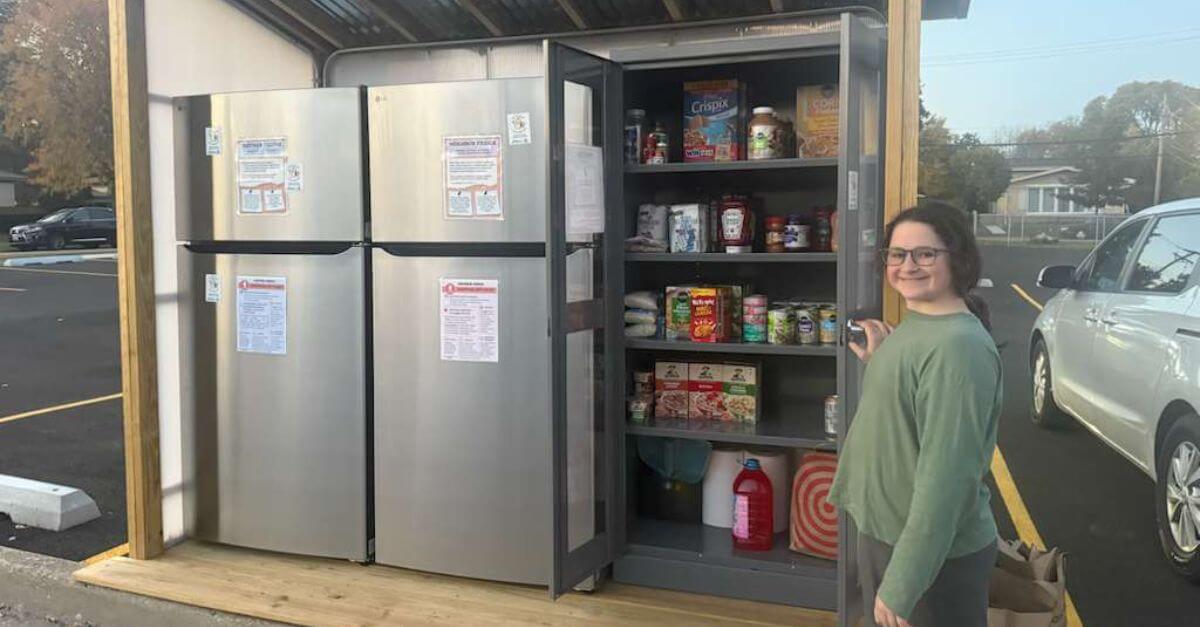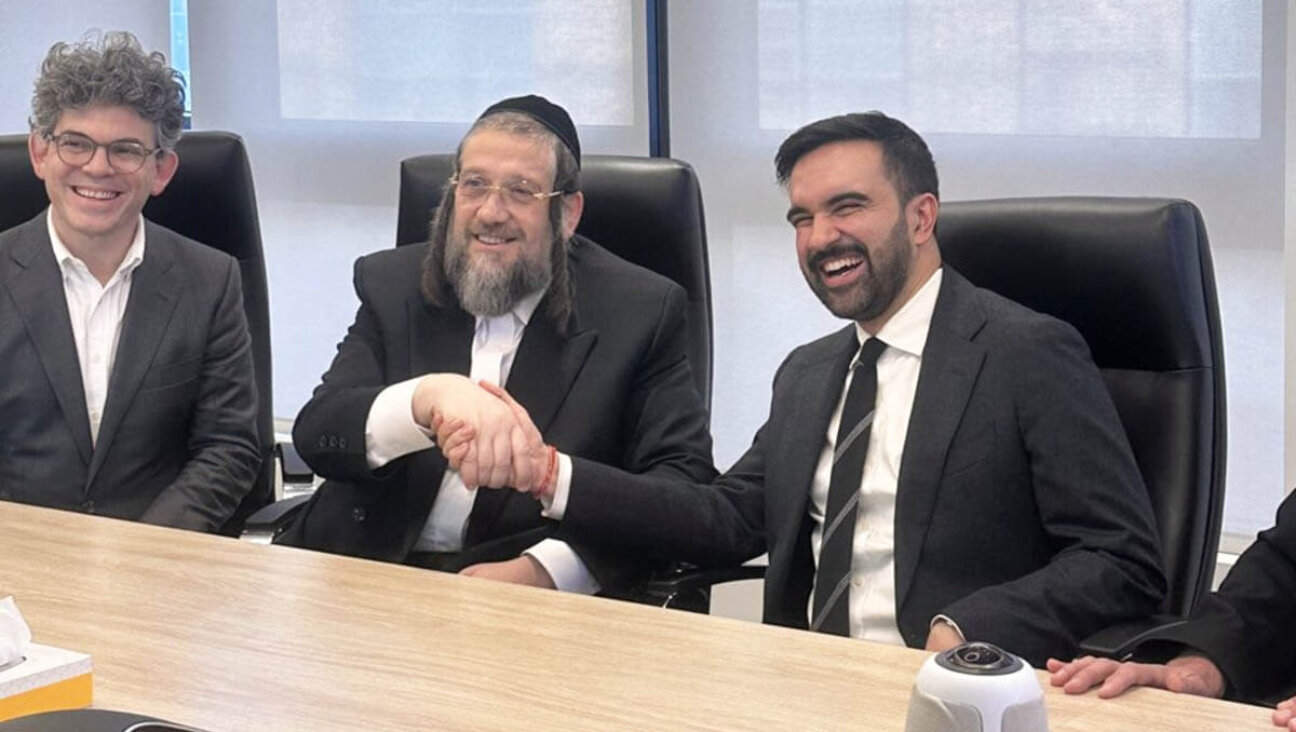A Revived Interest in Death
Why are American Jews interested in washing dead bodies?
For many, the work of the chevra kadisha, or Jewish burial society, takes some getting used to: A corpse is lovingly washed and tended to according to local custom and ancient ritual, dressed in linen shrouds and laid in the plainest of coffins. Rabbi Joel Soffin, the spiritual leader of Temple Shalom in Succasunna, N.J., was only seeking information about burial customs when he called up Congregation B’nai Jeshurun in New York three years ago; he was not entirely pleasantly surprised when he was invited to join as a guest in tahara, the ritual cleansing of the dead. But Soffin says now, “It was among the holiest experiences of my whole life.”
Temple Shalom’s move toward its own chevra kadisha is just part of a renewed interest in Jewish burial rituals. On December 10, in Manhattan, Rabbi Regina Sandler-Phillips, a longtime chevra–kadisha teacher and organizer who is writing a how-to guide, spoke with several dozen members of downtown New York synagogues about moving forward with plans for a new chevra kadisha. “We’ve been caring for the sick and the grieving,” Sandler-Phillips said. “What about the missing link between them” — honoring the dead?
Although New York is a center of such activity (Manhattan alone is home to a host of Orthodox burial societies, as well as three non-Orthodox chevra kadishas ), American Jews in smaller communities are also participating. “I didn’t think I was the sort of person who would do this,” said Jane Mudgett, who has been serving for four years in the chevra kadisha of Tulsa, Okla., whose Jewish community numbers about a thousand. But Mudgett, who characterizes herself as “somewhat observant,” now speaks eloquently about “helping [the dead] with the security of their soul.”
Some newer practitioners are interested as much in the communal details as the spiritual. Lou and Jackie Gordon, who are active in the Corvallis chapter of the Willamette Valley Jewish Community Burial Society in Oregon, excitedly recounted their six years’ experience with a broad spectrum of community members, from “quite traditional to Reform.”
For his part, Rabbi Stuart Kelman of Congregation Netivot Shalom in Berkeley, Calif., author of “Chesed Shel Emet: The Truest Act of Kindness” sees his 13-year-old community chevra kadisha not as a separate program but as the very “fiber and nature of the synagogue.”
The chevra kadisha movement has been quietly gaining steam in smaller Jewish communities over the past 20 years, spurred on in part by Rabbi Arnold Goodman’s 1981 book “A Plain Pine Box,” later turned into a TV documentary, which recounts the experiences of a Conservative congregation in Minneapolis as it started its own burial society.
Now another moment of national attention might have come. This past June, Kavod v’Nichum (Honor and Comfort), an organization providing assistance and education in Jewish funeral practice for groups in the United States and Canada, held its first convention in Rockville, Md. Besides auctioning off a casket (won by a congregation in Mobile, Ala.), the 200 participants (from Chabad to Jewish Renewal) witnessed a model tahara and discussed organizational problems and solutions.
David Zinner, executive director of Kavod v’Nichum, sees the increased interest in the institution as an “evolution that can come from many different directions,” from personal exposure to trauma to community changes — for example, a defunct Orthodox shul ceding its chevra kadisha to a Reform synagogue.
In New York, the burial-society movement is intimately connected to dissatisfaction with for-profit funeral homes. The two most active non-Orthodox burial societies in Manhattan use the facilities of the Plaza Jewish Community Chapel, which was born out of a state lawsuit against Service Corporation International, a for-profit concern that owns most Jewish funeral homes. Sandler-Phillips hopes that a downtown chevra kadisha could achieve a “working relationship” with local funeral homes, based on the model of the Jewish Funeral Practices Committee Group of Greater Washington D.C., which has worked out a nationally admired discount arrangement with a non-Jewish funeral home.
Elsewhere, however, the reasons for participation are very different — indeed, most of the participants in chevra kadishas interviewed for this article pronounced themselves satisfied with their funeral homes, which in most cases are not Jewish-owned. Lynn Greenhough, a chevra–kadisha educator in British Columbia, interviewed burial society participants in 16 communities.
“Smaller communities have to maintain chevra kadishas” in the absence of local Jewish funeral homes, she said. “They can be a real glue for the religious community.” Greenhough opined that aging baby boomers, finding themselves strongly affected by others’ deaths, “want to engage in some sort of understanding.” Many of those she interviewed got involved in chevra kadishas despite their lack of engagement in other aspects of synagogue life.
Rabbi Neil Gillman, a professor at the Jewish Theological Seminary and author of “The Death of Death: Resurrection and Immortality in Jewish Thought,” gave a more general reason: “It’s part of a return to tradition — the whole religious community is moving to the right.” Today’s Jews, said Gillman, are “reclaiming what their ancestors got rid of.” He compares the increased interest in burial societies to the recent resurgence of the mikvah, or ritual bath, among non-Orthodox Jews.
If there’s one observation made by the many various chevra–kadisha activists — from Berkeley to New York to British Columbia — it’s that the national Jewish organizations do not provide extensive support for burial-society work. “It doesn’t make for the most exciting funding proposal,” said Kavod v’Nichum’s Zinner.
Greenhough characterizes the support from the Conservative movement as “pretty cursory” (“institutional attention needs to be paid on the part of JTS,” she said). But Rabbi Kelman said, “I doubt whether national organizations, given their denominational nature, could fill the gap” of education and support for burial societies.
But the congregation-support divisions of the Reform, Reconstructionist and Conservative movements do in fact provide support for burial societies, though such assistance is not their top priority. Why is their support not more evident to chevra-kadisha activists? It might be that Jewish burial societies, centered as they are on local participation and community activism, aren’t compatible with the denominationally-based organizations — hence the need for an umbrella group such as Kavod v’Nichum.
The effects of death, said Greenhough, can “reverberate for years.” Perhaps the chevra-kadisha movement will have effects on American Jewry beyond the tahara room.
Zackary Sholem Berger is a contributor to the Yiddish Forward and the translator of “The Cat in the Hat” in Yiddish.
W
Guide for the Perplexed: Funeral Planning
MAX GROSS
On the fourth page of the pamphlet “Planning for a Funeral: A Guide for Death and Funeral Practices” is a reminder of the Latin adage caveat emptor — buyer beware.
A plush mahogany casket can run $10,000 — or more. A limousine service can cost $600 for an afternoon. Factor in flowers, food, a shomer (guardian) to sit with the body, a tahara (ritual washing), a headstone and you’re talking tens of thousands of dollars to lay your loved ones to rest.
“You need not buy a casket from a funeral home,” the guide says. “You can buy a casket directly from a company that manufactures them and under [New York] State law a funeral home must accept and use a casket so purchased.”
In 12 additional pages, “Planning for a Funeral” provides the newly bereaved or those planning a future funeral with the basics of what to do when a relative dies. It provides directives for when a death is discovered (call the police), which prayers should be said upon the death of a loved one (the Sh’ma) and what it all means. A cost supplement lists the prices of various coffins, livery services and funeral homes in the New York area.
“Planning for a Funeral” is enough to send chills down the spine of those who might otherwise avoid thinking about death.
Max Eisen, 85, one of the principal authors of “Planning for a Funeral,” discovered just how expensive the process was when his 98-year-old aunt Rose died three years ago. The longtime Broadway public relations man was stunned when he was handed a bill for $10,000. He began investigating possibilities for the bereaved that don’t rely on the web of services offered by funeral homes. He found cemetery plots throughout the city with prices that varied tremendously. Eisen — with the help of an ad hoc committee from his longtime synagogue, the Stephen Wise Free Synagogue, including the congregation’s former rabbi — has delved into the mournful world of the costs faced by the bereaved. To develop the guide, he spoke with nearly all of New York City’s Jewish funeral homes. When Eisen and his ad hoc committee were finished with the guide, they presented it to the Union for Reform Judaism (formerly the Union of American Hebrew Congregations), with the hope that it would be made available to all of the umbrella organization’s member synagogues.
“When I started to get into it,” Eisen told the Forward, “I approached the head of the temple and said, ‘We have to look into this situation. Most people don’t know what they’re doing. They’re all lost. They walk into a chapel’” without any information.
“Planning for a Funeral” is, of course, not the first text of its kind. In the four decades since Jessica Mitford penned her groundbreaking exposé of the funeral industry, “The American Way of Death,” dozens of guides, books and Web sites have been devoted to funeral planning. There are, however, surprisingly few Jewish guides, and most are general, not listing prices or specific service providers. Almost all of the ones that do exist are compiled by individual synagogues and cannot be obtained online or at bookstores.
The Reform movement, for example, has two main guides explaining how to prepare oneself for death: One of them, “A Time To Prepare,” is a workbook that asks each individual to sketch in what kind of funeral they would like. “To Everything There is a Season” covers much the same ground as “Planning for a Funeral” in more than twice the amount of space (Eisen’s guide is 13 pages).
“It’s really not a ‘how-to’,” Eisen said of “To Everything There is a Season.” “It’s a thick brochure, and it kind of involved way too much.”
What Eisen offers, instead, is short, concise and straightforward, allowing users to focus their attention on the grieving process, not on the costs of the casket.
















